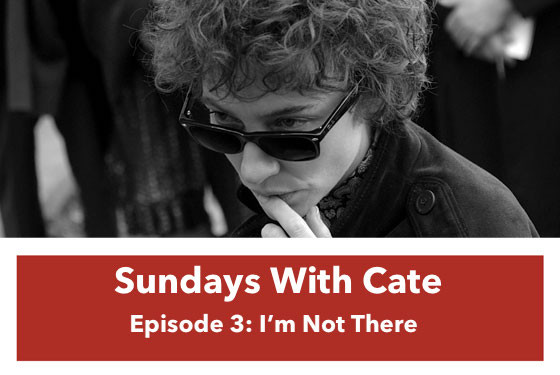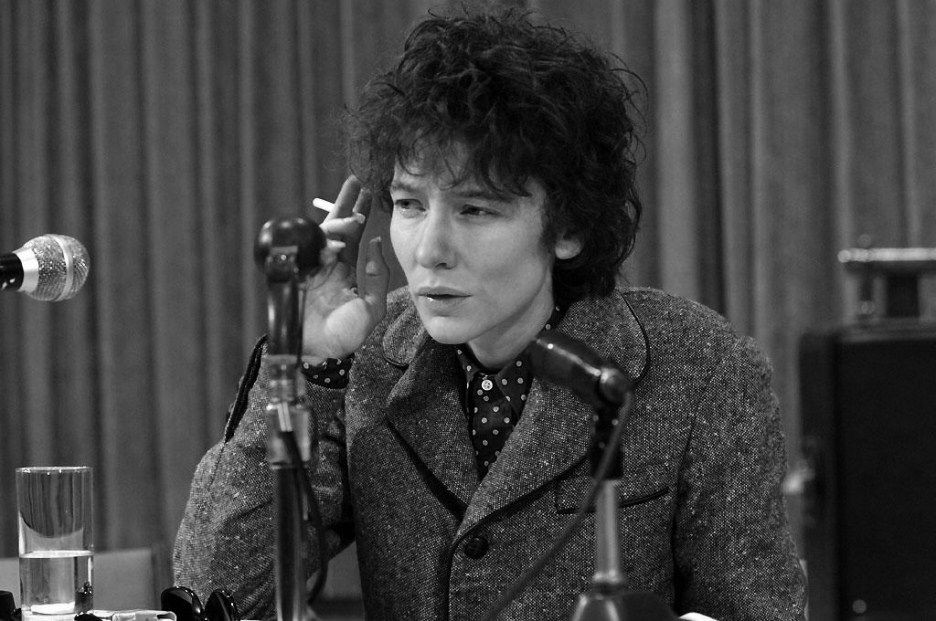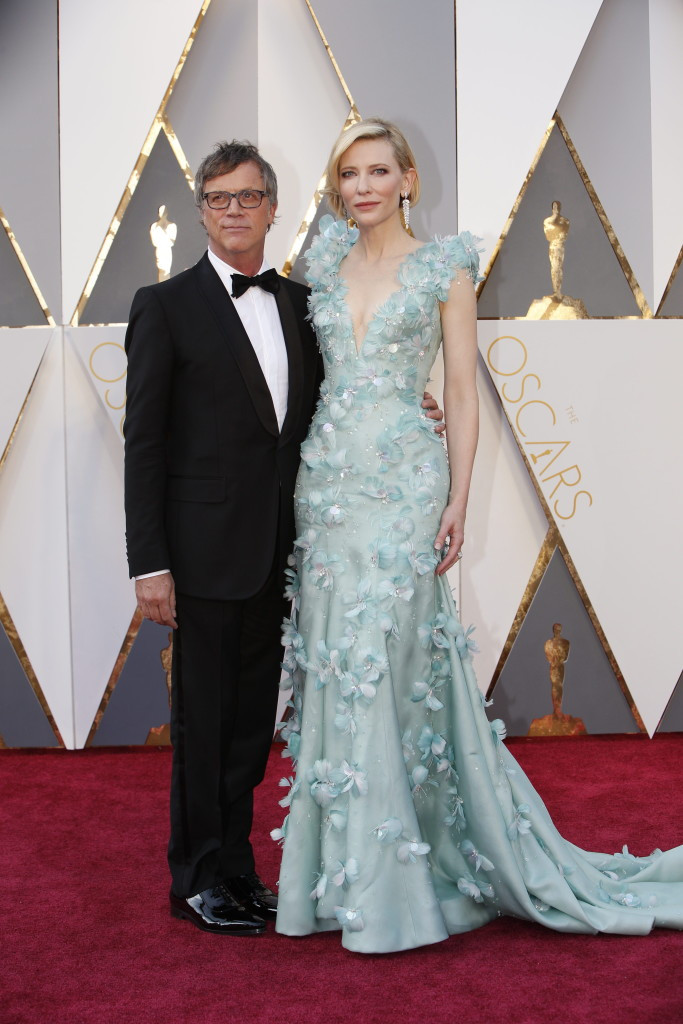Cate Blanchett’s career is marked by daring roles and stunning transformations, but her portrayal of Bob Dylan in Todd Haynes’s 2007 film, I’m Not There, remains one of her most captivating and critically acclaimed performances. This unconventional biopic, which explores the multifaceted persona of Bob Dylan through six different characters, offered Blanchett a unique canvas to showcase her talent for embodying complex figures. Let’s delve into why Blanchett’s Jude Quinn became the heart of this cinematic experiment, earning her accolades and solidifying her reputation as one of the most versatile actors of our time.
Unpacking ‘I’m Not There’: A Biopic Unlike Any Other
Released in November 2007, I’m Not There defies traditional biopic conventions. Instead of a linear narrative, director Todd Haynes presents a fragmented portrait of Bob Dylan, using six distinct characters to represent different facets of his life and artistic evolution. As described on IMDb, the film offers “ruminations on the life of Bob Dylan, where six characters embody a different aspect of the musician’s life and work.” This innovative approach allows for a richer, more impressionistic understanding of Dylan, moving beyond simple biographical details to capture his elusive spirit.
 I'm Not There film logo, directed by Todd Haynes, starring Cate Blanchett as Bob Dylan.
I'm Not There film logo, directed by Todd Haynes, starring Cate Blanchett as Bob Dylan.
Among these six personas, Cate Blanchett embodies Jude Quinn, a representation of Dylan’s electric, counter-revolutionary 1960s phase. Her introduction is striking and unconventional, mirroring the film’s overall style. Initially presented as a deceased figure, Jude Quinn dramatically emerges at the 46-minute mark, guitar in hand, delivering a powerful voiceover before symbolically “shooting” the audience with a machine gun. This bold introduction immediately sets the tone for Blanchett’s performance: not mere mimicry, but a visceral embodiment of Dylan’s rebellious and enigmatic aura.
Why Cate Blanchett’s Dylan Captivates
Critics and audiences alike were particularly drawn to Cate Blanchett’s portrayal of Bob Dylan. But what made her performance as Jude Quinn so exceptional? Was it simply mimicry, or did she tap into something deeper? Many argue that Blanchett went beyond imitation, capturing the very essence of Dylan’s spirit during his transformative 1960s period.
 Cate Blanchett as Jude Quinn in I'm Not There, portraying Bob Dylan's 1960s persona, holding a guitar and pretending to shoot the audience with a machine gun.
Cate Blanchett as Jude Quinn in I'm Not There, portraying Bob Dylan's 1960s persona, holding a guitar and pretending to shoot the audience with a machine gun.
The gender-bending aspect undoubtedly added another layer of intrigue. As The Hollywood Reporter noted in their review, “The star of the show is undoubtedly Blanchett, who has great fun playing Dylan as a showboat who quite knowingly goes about creating his reputation for rebellious independence.” However, the acclaim went beyond novelty. Blanchett delved into the mannerisms, the posture, and the very attitude of Dylan, revealing not just an imitation but a profound understanding of the persona he projected. Owen Gleiberman from Entertainment Weekly aptly described it: “Blanchett makes Dylan a cussed dude who uses his wit to wound, and Haynes’ slyest joke is that the actress, from her lurching marionette posture to her boyish cheekbones to her slurry misanthropic mumble, is the film’s most exquisitely spot-on Bob.”
Some critics even pondered if this was Blanchett’s best performance to date, a testament to the depth and impact of her portrayal. Anthony Lane in The New Yorker wrote, “Blanchett seems to yield herself to the project with more gusto and curiosity than the others, as if there were truths about Dylan that need to be unearthed, not merely toyed with.” This highlights Blanchett’s commitment to exploring the complexities of Dylan, going beyond surface-level imitation to find the soul beneath the iconic image.
Memorable Moments and Dylan’s Voice
Several scenes featuring Blanchett as Jude Quinn stand out. The breathtaking framing of her walking through a corridor, the confrontational press conference, and the poignant meeting with Allen Ginsberg are all cited as highlights. Her final shot, looking directly into the camera, is particularly memorable, leaving a lasting impression on the viewer.
 Cate Blanchett embodying Bob Dylan as Jude Quinn in I'm Not There, during a press conference scene, highlighting her transformative performance.
Cate Blanchett embodying Bob Dylan as Jude Quinn in I'm Not There, during a press conference scene, highlighting her transformative performance.
Adding to the authenticity, Blanchett delivers some of Dylan’s characteristic pronouncements. One famous quote encapsulates his enigmatic and often contradictory nature: “Saying ’cause of peace’, it’s like saying, ‘hunk of butter’, you know, I don’t want you to listen to anybody who wants you to believe is dedicated to the hunk and not the butter.” This quote, delivered with Blanchett’s nuanced portrayal, exemplifies the film’s success in capturing Dylan’s complex and often paradoxical worldview.
Critical Acclaim and Awards Recognition
I’m Not There and Cate Blanchett’s performance garnered significant critical acclaim. While some critics like A.O. Scott from The New York Times noted moments of “occasional exasperation at Mr. Haynes sprawling, hectic virtuosity,” the overall reception was overwhelmingly positive, especially for Blanchett.
The film premiered at the Venice Film Festival, where Blanchett won the prestigious Volpi Cup for Best Actress. Her awards journey continued with an Oscar nomination, an Indie Spirit Award win, and a Golden Globe win (although the ceremony was not televised that year). The National Society of Film Critics also recognized her performance, further solidifying her critical triumph.
Blanchett and Haynes: A Director-Actor Partnership
I’m Not There marked Cate Blanchett’s first collaboration with director Todd Haynes, a partnership that would later flourish with Carol. Blanchett herself acknowledged Haynes’s influence, stating upon accepting her Indie Spirit award, “We all owe a great debt of thanks To Todd Haynes’ body of work which has always been independent.”
Haynes’s vision for Jude Quinn was always intended for an actress. He explained, “It was written and conceived as an actress to play the part of Jude from the beginning, before I knew it would be Cate. It was really just that moment in Dylan’s life… I thought an actress could be interesting, because there was an androgyny there. It wasn’t a Bowie androgyny, it was more a Patti Smith androgyny he was channeling.”
Blanchett understood Haynes’s vision, recognizing that casting a woman in the role was “a really ironic gesture and also very clever.” She elaborated, “If a man played the role, people would have assessed it in a different way, whereas they’ve been able to get into the strangeness of what Dylan must have been like in that period by the very fact that I’m a woman.”
 Director Todd Haynes and actress Cate Blanchett, collaborators on I'm Not There and Carol, showcasing their successful partnership in creating unique cinematic experiences.
Director Todd Haynes and actress Cate Blanchett, collaborators on I'm Not There and Carol, showcasing their successful partnership in creating unique cinematic experiences.
This collaboration extended beyond conceptual understanding to meticulous detail. Haynes recounted Blanchett’s dedication to the frame, noting, “when I was working with Cate Blanchett on I’m Not There, she was playing a man in this role of Jude. She would look at playback… she just wanted to see how her hips were being filmed and how to place her body in the frame to minimize the broadest curves of her female hips.” This anecdote illustrates Blanchett’s commitment to fully embodying the character, even down to the technical aspects of filmmaking.
Conclusion: A Lasting Impression
Cate Blanchett’s portrayal of Bob Dylan in I’m Not There is more than just an impersonation; it’s a profound interpretation of a complex artistic persona. Through Jude Quinn, Blanchett captured the rebellious spirit, the enigmatic charm, and the intellectual depth of Dylan’s 1960s self. Her award-winning performance remains a highlight in her illustrious career and a testament to the power of unconventional storytelling in cinema. I’m Not There itself stands as a bold and inventive biopic, forever marked by Blanchett’s unforgettable transformation into Bob Dylan.

